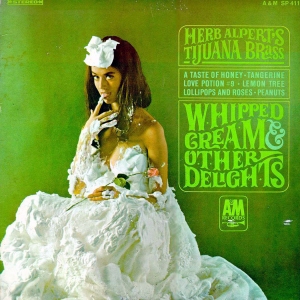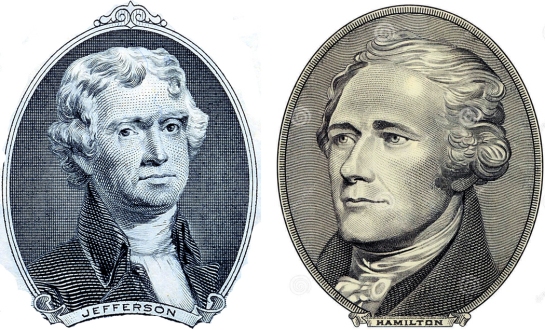
The new science series, Cosmos: A Spacetime Odyssey, has been a huge disappointment.
Rife with cliches, cheap-looking animation and lack of coherent structure, after its first two episodes, it is proven a shallow and glib sequel to Carl Sagan’s 1980 original, Cosmos: A Personal Voyage.
The problems are myriad. The animated sequences are just embarrassing; they remind one of Sunday-school Bible story videos. Graphic ideas that were original 30 years ago now seem tired and worn; if I never see another green-screen calendar standing in for the 13.8 billion years of the universe and an actor standing on Dec. 31, pointing to the last 16 seconds as all of recorded history — well, let’s just say I will survive if I never see that again. There has to be a fresher way of presenting the material. 
I don’t have a problem, per se, with Neil deGrasse Tyson as presenter, except that he is given such a lame script to read. He has been a persuasive and entertaining host on many another appearance, but here, he is reduced to being a hired-gun presenter, reading someone else’s words. One of the primary strengths of the original series was that it was Sagan’s words, his ideas and his idiosyncrasies that gave the series such strength and authority. 
You have to look long and hard deep into the credits to even discover who wrote this new series. The surprise is that the script is by Sagan’s widow, Ann Druyan and astrophysicist Steven Soter, both of whom collaborated with Sagan on the first series. It is astonishing that the original was so personal and this sequel so deadeningly impersonal.
The second episode of the sequel was marginally better than the first, so maybe the series will get better as it goes along, although I doubt it. There is a serious flaw in its conception.
Television has a marvelous history of documentary series, beginning — by most people’s reckoning — with Kenneth Clark’s Civilisation: A Personal View, from 1969. That series set the parameters for those that followed: Jacob Bronowski’s The Ascent of Man (1973), Alistair Cooke’s America: A Personal History of the United States (1972), Robert Hughes’ The Shock of the New (1980), and, of course, Sagan’s Cosmos (1980).
There were others, too. Jonathan Miller’s The Body in Question (1978), Phillip Morrison’s The Ring of Truth: An Inquiry into How We Know What We Know (1987), David Attenborough’s Life on Earth (1979). What makes each of these series memorable is that they are told through a presenter who has personal knowledge of what he is talking about, and more than that, has a point of view.
Whether it is Hughes, looking like a pugnacious longshoreman, or Cooke looking exactly not like a longshoreman, they each ooze personality from every pore. Neil deGrasse Tyson has personality, too. But the earlier presenters had more than personality: They had something to say.
Many documentaries — and most so-called contemporary documentary series on cable TV channels — present either a dumbed-down version of the accepted wisdom, the handed-down story, or else an “objective” and impersonal “encyclopedia-entry” regurgitation of factoids.
There are different ways of being objective. Frederick Wiseman gives us long documentary films with no narration at all — just immediate immersion into his subject, leaving us to figure it all out. Or, like the PBS series, Frontline, give us a clear narrative, read in the Voice of Doom timbre of Will Lyman — the most distinctive and recognizable faceless voice since John Facenda telling us of the frozen tundra of Lambeau Field.
And at least one great television documentary series has come from this objective school: The World at War, the 1973 Thames Television series created by Jeremy Isaacs and narrated by Laurence Olivier. For that, the enormity of its subject seemed to require a certain distance.
But most of the great and memorable educational series have come through the sensibility of a single presenter — Clark’s take on European art, Bronowski on science or Martin Scorsese on film.
It is important to recognize that it is not the personality of the presenter so much as it is that important word: sensibility. It is not the knowledge that the host conveys as his relationship to the knowledge, the connections between things, the understanding. As Albert Einstein said, “When I need a fact, I can look it up.” It isn’t facts we need but the appreciation of our ineluctable relation to those facts. Sensibility is fact filtered through the human mind. It is where poetry comes from and it is poetry that is missing in the new series. 
Just one example: In the original Cosmos series, the “spaceship of the imagination” that Sagan offers us comes in the form of a starburst, or, as it later turns out, the fluffy starburst achene of a dandelion. In the final episode, Sagan speaks to us directly on a rocky seashore and picks up a tiny white seedhead and lets it fly with the breeze, and we are shocked into the recognition that the spaceship of the imagination is a metaphor — the small achene and the immense starburst are micro and macro version of the same thing — that the earthly weed from our front lawns and the burning starry dynamo in the machinery of night are one and the same substance.
As William Blake put it: “Infinity in a grain of sand and eternity in an hour.”
In contrast, the new Cosmos has us riding in what looks like a giant letter opener, shiny as chromium steel and just as hard and impersonal — it is a symbol of technology, not science. Sagan would never confuse the two.
It tells us how advanced have become the tools of computer graphics and their ability to create the illusion of reflections on a moving surface. We may admire the software that produced the visuals, but we are hardly edified by them.
One other comparison: Tyson in the new series tries to inject a bit of himself in the opening episode, telling us how when he was 17, he met Carl Sagan and how much it meant to him as a young man interested in astronomy. It is the one moment of authenticity in the otherwise stumbling artificiality of the show.
The injection of the personal has often been a tactic used in documentaries. But compare Tyson’s moment of authenticity with Jacob Bronowski in the episode of The Ascent of Man in which he discusses the impossibility of certainty in science. At the end, he stand at the edge of a pond in the Auschwitz death camp and defends science as the best we can know in our own fallibility, and the evils visited upon us by certainty.
“This is the concentration camp and crematorium at Auschwitz. This is where people were turned into numbers. Into this pond were flushed the ashes of some four million people. And that was not done by gas. It was done by arrogance. It was done by dogma. It was done by ignorance. When people believe that they have absolute knowledge, with no test in reality, this is how they behave.”
He bends down and puts his fist in the muck, drawing up a handful.
“I owe it as a human being to the many members of my family who died here, to stand here as a survivor and a witness. We have to cure ourselves of the itch for absolute knowledge and power. We have to close the distance between the push-button order and the human act. We have to touch people.”
It is the difference between the trivial and the profound.
So, in response to the banality of the new, lesser Cosmos, we should look back at some of the best that television has given us, and the people who have something to say who have stood in front of the cameras to express their connection to the world they live in, to share their sense of attachment and their fresh words, so lacking in glibness and cant.
These are my nominees for the five best television documentary series ever produced.
Civilisation: A Personal View (1969) — Sir Kenneth Clark provides a heartbreaking overview of European art and civilization in a series that is a much better, more nuanced view of its subject than you probably remember. If you recall it as Clark, with the British public-school back-palate drawl, talking about the “great masterpieces” as if he were an Oxfordian tour bus guide, you will be in for a surprise: His view is much more subtle than that. He makes a serious attempt to discover just what civilization might be, and uses the past 500 years of European history to make his discovery.
The Ascent of Man (1973) — Mathematician Jacob Bronowski reacted to Clark’s view of civilization, deciding it placed too much emphasis in art and not enough on science, so he attempted to do the job. With his unfortunate 1970’s fashion sense and a slight lisp, he could sometimes sound a bit pompous, but the content of his cosmopolitan mind was a tremendous gift to anyone willing to listen.
The Shock of the New (1980) — Art critic Robert Hughes tried to make sense of Modernism in art, and gave us many profound insights, including the uncomfortable relationship of Surrealism and Fascism. Hughes can be confrontational and pugilistic, but unlike most art critics, whose prose is often no more digestible than an old mattress, he wrote with grace, wit and memorability.
Cosmos: A Personal Voyage (1980) — Astronomer Carl Sagan made the universe personal, gave us a way in to a subject usually obscured in the jungle foliage of higher mathematics. What is surprising, more than 30 years on, is just how much he got right. Yes, you can make fun of “billions and billions,” but the truth is, there are billions of billions out there.
The World at War (1973) — The exception that proves the rule, this 26-episode series combines archival film footage with meaningful interviews with surviving participants from all sides. Written and produced by Jeremy Isaacs, it comes with the voice-over of Sir Laurence Olivier, using his most serious and least thespianic narrative powers. This is a triumph of direct and unmannered documentation.
It should be a hallmark of television literacy to have seen all of these series.
The BEST of the REST

Can you name these presenters? Answers below
Since it is the presenter (a very British term, but more accurate than “narrator,” “host” or “emcee”) that makes the series, one should look for any programs by
Michael Wood, whose boyish enthusiasm brought us In Search of the Trojan War, In Search of the Dark Ages, The Story of India and many more. He is best when the material is his own; when he is just a hired gun, as in the Art of the Western World, he is entertaining, but less engaging.
Michael Palin, the former Monty Python stalwart, who has become the best travel presenter ever. He began doing shows on railroad trains, but hit his stride with Around the World in 80 Days, in which he met the challenge of Phileas Fogg. He followed that series with Pole to Pole, Full Circle with Michael Palin, Sahara, Himalaya and Michael Palin’s Hemingway Adventure.
Ian Wright, a cherubic and outgoing Englishman with a Suffolk born glottal stop, he is a frequent presenter of Lonely Planet travelogs. No one joins in with whatever local population, or with less self-consciousness than Wright. You want him to be your permanent travel partner.
Martin Scorsese, the current reigning king of movie directors, has to be the best informed historian of film ever, with an encyclopedic knowledge of all things cinematic and always and engaged and engaging way of speaking about his passion. He has made two series about films that are a must: A Personal Journey with Martin Scorsese Through American Movies, and My Voyage to Italy, in which he does the same thing for the classic Italian films he grew up with.
Leonard Bernstein, who can be more annoying than anyone else on my list, with his stentorian voice and oracular pronouncements, is nevertheless a great teacher who can disclose the secrets of classical music even to the uninitiated, as long as they are willing to pay attention. His series of Harvard lectures, The Unanswered Question, is one of the best discussions of the changing history of classical music out there, even if you have to put up with a dose of Chomskian linguistics.
Sister Wendy Beckett, who can also be annoying, is nevertheless one of the most patient and thorough observers of the narrative content of Renaissance and Baroque paintings. If Modernism has made us condescending to subject matter in art, this English nun reawakens us to the subtlety and power of that content.
Simon Schama, the polymath, has given us series on The History of Britain and The Power of Art, which looks with some detail at eight artists and eight paintings. He can be snide and sometimes sounds like an English public school don, but he has a good sense of humor. His newest series, The Story of the Jews, begins this week on PBS.
There are others, too. James Burke, Bettany Hughes, Niall Ferguson. The BBC especially, is ripe with presenters.

Can you name these presenters? Answers below
But the king of all of them, largely unmentioned until now, but only because he deserves the Big Finish, is the greatest presenter of all, David Attenborough. For more than 60 years, he has been presenting nature programs for the BBC and has written and presented some of the best documentary series ever made. In fact, of the Top 20 TV documentary series listed on IMDb, Attenborough created 10 of them.

David Attenborough
No one is more genuine on screen, nor more cosmopolitan in approach, or more knowledgeable about his subject or more personable than Attenborough. A list of his accomplishments takes up 16 pages on Wikipedia. He has made the definitive series of programs about life on the planet five times, each one better than the last, beginning with Life on Earth in 1979, The Living Planet in 1984, The Trials of Life in 1990, Planet Earth in 2006, and Life in 2009. That doesn’t count Blue Planet (2001), The Life of Birds (1998), The Life of Mammals (2002). In 2013, at the age of 86, he gave us Africa.
The quality of these series, the many others, and the scores of one-offs — not to mention that as head of programing at the BBC, he greenlighted such classics as Civilisation, Ascent of Man and Alistair Cooke’s America — makes Attenborough not just a hero, but a god. At least a divi filius.
He is a paragon of humanistic awareness, curiosity and fairness, and has not, to my knowledge, ever in his life uttered a cliche. I’ve never seen anyone more present in the world. If he is not awarded some sort of Nobel Prize for his life work, the universe will have to be declared deficient.
Presenter mugs: Top photo, top row (L-R): Alistair Cooke, Bettany Hughes, Jacob Bronowski, David Attenborough, Clive James. Middle row: Edward Herrmann, James Burke, Ian Wright, David Suzuki, Kate Humble. Bottom row: Ludovic Kennedy, Martin Scorsese, Jonathan Miller, Kenneth Clark, Fiona Bruce.
Bottom photo, top row: Michael Palin, Michio Kaku, Niall Ferguson, Morgan Freeman, Michael Wood. Middle row: Simon Schama, Peter Coyote, Robert Hughes, Carl Sagan, Sigourney Weaver. Bottom row: Sister Wendy Beckett, Trevor McMillan, Neil deGrasse Tyson, Will Lyman, Terry Jones.


















































